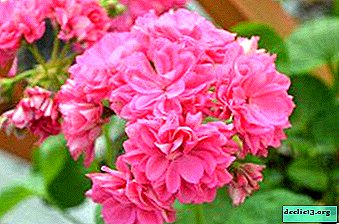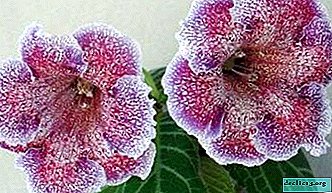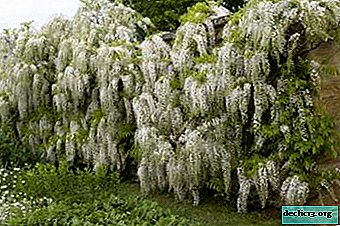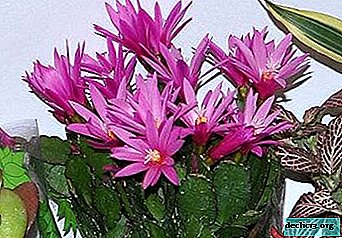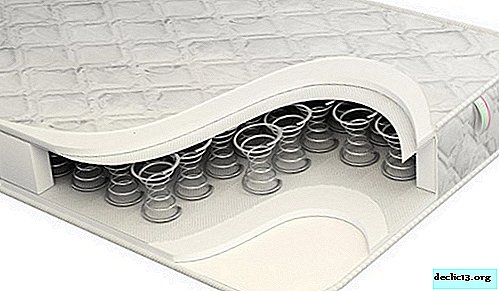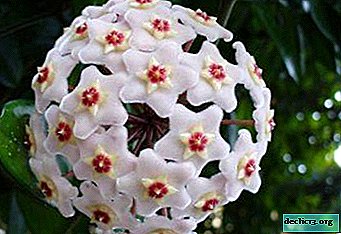Popular types of notocactus: Otto, Verneri, Rehsky and others
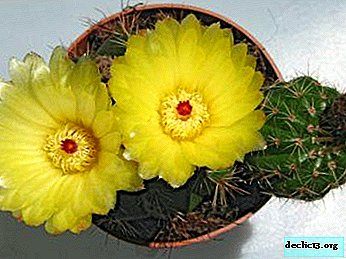
Notocactus (Notocactus) got its name from the place of growth ("notius" in the translation south). Belongs to the cactus family. His homeland is considered South America. In the natural environment, it grows on rocks and cliffs. You can meet it at an altitude of 2 thousand meters. Already in the third year you can admire its flowering. Notocactus there are about 20 species. In this article, we will consider in detail the most popular of them: Otto, Verneri, Rehsky, Submammulosus and others. And also find out the options for caring for them.
Description of varieties and photos
The flowers of notocactus differ not only in color, but also in shape and size. The stems can be spherical or cylindrical in shape with pronounced ribs. It all depends on the species.
Vernery

The notocactus of the Verneri species (Notocactus Werneri) looks especially beautiful and bright. Lilac petals complete with a yellow stigma of a pestle always look catchy. On one stem, Verneri can have several flowers at once.
A distinctive feature of this species is a dark green stem with subtle ribs. Such a cactus grows low, which must be considered when selecting a pot.Leninghouse

The highest notocactus is considered to be Leninghaus (Notocactus leninghausii) - up to 1 m. But this is not the only distinguishing feature of this plant: initially the stem is spherical in shape, but as it grows, it acquires a cylindrical shape. The diameter of the branching cactus is 10-12 cm. The number of ribs is from 30 pieces. It blooms mainly in summer. Lemon-yellow rosette with a diameter of 5 cm. At the base of the flower is a short tube, covered with a small bristle.
Submammulosus

Notocactus submammulosus (Notocactus submammulosus) also has yellow flowers, the diameter of the outlet is 5cm. Several flowers are formed on the stem at once. Unlike its predecessor, its maximum height is 12 cm, thickness - 10 cm. The number of ribs is limited to 13th. To the top they are pointed. This species grows alone.
Otto

Notocactus ottonis has 5 varieties. Its flowers can be yellow, white and red. The height of the inflorescence is 4-6 cm. Glossy petals. The stem is in the shape of a flat sphere, the diameter of which is a maximum of 15 cm. An adult plant has 8-12 rounded ribs. The trunk is deep dark green.
A distinctive feature of this species is the ability to form many not only root children, but also underground trunks. Underground shoots are the basis for the growth of new stems.Slim

The second name of this species is sunny (Notocactus apricus) because of the color of the flowers. The trunk grows in the shape of a ball. Its height is 6 cm, diameter - from 6 to 10 cm. With such a small size, the cactus has 15-20 ribs. On one trunk several colors are formed at once. The inflorescences are very large for such a small trunk 7 cm in diameter. Their color is pale yellow, with a pronounced core.
Rehsky

Notocactus rechensis also has small dimensions: height - 7 cm, diameter 3.5-5 cm. The stem is cylindrical in shape. The number of ribs is 18. They are slightly curved and deviated from the vertical position. The length of the main spines is 1.5 cm. Unlike other species, the Rech cactus is highly branched. It blooms in yellow. The petals are long and sharp. Visually, it seems that they are made of wax. Outlet diameter 3 cm.
Yubelman

Notocactus uebelmannianus has a flattened shape in the form of a ball. It grows up to 8-10 cm. The trunk is 14-17 cm wide. This cactus has 15 poorly expressed rounded ribs. The thorns of a cactus are thick: one central and 4-6 radical (and about cacti without thorns is described here). Flowers can be dark red, orange-yellow and yellow color, depending on the variety. Their diameter is 5-7 cm. There is a fleecy tube.
Flat

Notocactus tabularis is classified as a dwarf cactus. This species has other names - Tiled and Lamellar. Its height is 8 cm. The shape of the stem is flattened-spherical. On the trunk there are 16-23 ribs. Another feature of it is the depressed tip. The areoles of the needles are located very close. The spines are 1 cm long. The areola consists of 4 central needles and 16–20 radical needles. Cactus blooms in yellow. The stigma is bright red. The socket is large - 6 cm wide.
How to care?
Care for notocactus is not complicated. Even a beginner grower will cope with this task. This species grows slowly. The flowering period begins in spring and summer, depending on the species.
Nevertheless, there are a number of recommendations that must be observed when caring for notocactus:
- Priming. There are several options for suitable mixtures. For example, sand and clay soil (3: 1) or sand, brick chips, turf, leaf and peat land (in equal shares).
- Air temperature - +20-25 0C. Maximum allowable mark +380FROM.
- Illumination - sunny side, without scorching rays. Southeast window sills are ideal.
- Watering. For a plant, drying out and waterlogging of the soil is equally detrimental. In March-September, watering is plentiful. In October-March - moderate. Water should be at room temperature.
- Fertilizer. As fertilizer, special potassium top dressing is used for cacti. The procedure is necessary from April to September, 2 times a month.
- Transfer. Young plants must change the pot annually, then the procedure is repeated every 2-3 years. The best time for a transplant is February.
Notocactus gained its popularity with its unpretentiousness in care and beautiful flowering. All kinds are so different from each other. Some reach a meter height, others only 6 cm. A variety of species allows you to choose a copy that will fit into the interior of any apartment and satisfy the aesthetic needs of each grower.

